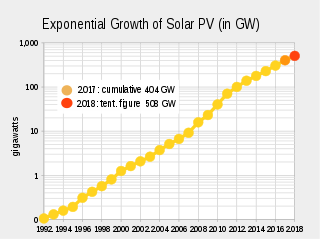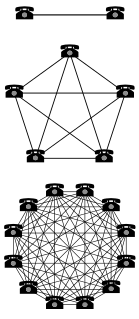 W
WMany scholars believe that advances in artificial intelligence will someday lead to a post-scarcity economy where intelligent machines can outperform humans in nearly every domain. The questions of what such a world might look like, and whether specific scenarios constitute utopias or dystopias, are the subject of lively debate.
 W
WCreative destruction, sometimes known as Schumpeter's gale, is a concept in economics which since the 1950s has become most readily identified with the Austrian-born economist Joseph Schumpeter who derived it from the work of Karl Marx and popularized it as a theory of economic innovation and the business cycle.
 W
WCyborg art, also known as cyborgism, is an art movement that began in the mid-2000s in Britain. It is based on the creation and addition of new senses to the body via cybernetic implants and the creation of art works through new senses. Cyborg artworks are created by cyborg artists; artists whose senses have been voluntarily enhanced through cybernetic implants. Among the early artists shaping the cyborg art movement are Neil Harbisson, whose antenna implant allows him to perceive ultraviolet and infrared colours, and Moon Ribas whose implants in her feet allow her to feel earthquakes and moonquakes. Other cyborg artists include:Manel De Aguas, a Catalan photographer who developed fins that allow him to perceive atmospheric pressure, humidity and temperature through a couple of implants at each side of his head. Joe Dekni, an artist who has developed and installed a radar system in his head. The sensory system includes two implants in his cheekbones. Pau Prats, creator of a system that allows him to feel the ultraviolet ray levels that reach his skin. Alex Garcia, whose sensor installed in his chest allows him to feel the air quality levels around him. Kai Landre, a musician developing two implants to hear the sound of the particles affected by the collusion of cosmic rays.
 W
WThe Future of Work and Death is a 2016 documentary by Sean Blacknell and Wayne Walsh about the growth of exponential technology.
 W
WThe global spread of the printing press began with the invention of the printing press with movable type by Johannes Gutenberg in Mainz, Germany c. 1439. Western printing technology was adopted in all world regions by the end of the 19th century, displacing the manuscript and block printing.
 W
WThe Great Stirrup Controversy is the academic debate about the Stirrup Thesis, the theory that feudalism in Europe developed largely as a result of the introduction of the stirrup to cavalry in the 8th century CE. It relates to the hypothesis suggested by Lynn Townsend White Jr. in his 1962 book, Medieval Technology and Social Change. White believed that the stirrup enabled heavy cavalry and shock combat, which in turn prompted the Carolingian dynasty of the 8th and 9th centuries to organize its territory into a vassalage system, rewarding mounted warriors with land grants for their service. White's book has proved very influential, but others have accused him of speculation, oversimplification, and ignoring contradictory evidence on the subject. Scholars have debated whether the stirrup actually provided the impetus for this social change, or whether the rise of heavy cavalry resulted from political changes in Medieval Europe.
 W
WWorldwide growth of photovoltaics has been close to exponential between 1992 and 2018. During this period of time, photovoltaics (PV), also known as solar PV, evolved from a niche market of small-scale applications to a mainstream electricity source.
 W
WThe hype cycle is a branded graphical presentation developed and used by the American research, advisory and information technology firm Gartner to represent the maturity, adoption, and social application of specific technologies. The hype cycle claims to provide a graphical and conceptual presentation of the maturity of emerging technologies through five phases.
 W
WIn computing, a legacy system is an old method, technology, computer system, or application program, "of, relating to, or being a previous or outdated computer system," yet still in use. Often referencing a system as "legacy" means that it paved the way for the standards that would follow it. This can also imply that the system is out of date or in need of replacement.
 W
WMiniaturization is the trend to manufacture ever smaller mechanical, optical and electronic products and devices. Examples include miniaturization of mobile phones, computers and vehicle engine downsizing. In electronics, the exponential scaling and miniaturization of silicon MOSFETs leads to the average number of transistors on an integrated circuit chip doubling every two years, an observation known as Moore's law. This leads to MOS integrated circuits such as microprocessors and memory chips being built with increasing transistor density, faster performance, and lower power consumption, enabling the miniaturization of electronic devices.
 W
WIn economics, a network effect is the phenomenon by which the value or utility a user derives from a good or service depends on the number of users of compatible products. Network effects are typically positive, resulting in a given user deriving more value from a product as other users join the same network. The adoption of a product by an additional user can be broken into two effects: an increase in the value to all other users and also the enhancement of other non-users motivation for using the product.
 W
WRenewable energy is useful energy that is collected from renewable resources, which are naturally replenished on a human timescale, including carbon neutral sources like sunlight, wind, rain, tides, waves, and geothermal heat. The term often also encompasses biomass as well, whose carbon neutral status is under debate. This type of energy source stands in contrast to fossil fuels, which are being used far more quickly than they are being replenished.
 W
WA technological revolution is a period in which one or more technologies is replaced by another, novel technology in a short amount of time. It is an era of accelerated technological progress characterized by new innovations whose rapid application and diffusion typically cause an abrupt change in society.
 W
WSocial construction of technology is a theory within the field of science and technology studies. Advocates of SCOT—that is, social constructivists—argue that technology does not determine human action, but that rather, human action shapes technology. They also argue that the ways a technology is used cannot be understood without understanding how that technology is embedded in its social context. SCOT is a response to technological determinism and is sometimes known as technological constructivism.
 W
WAccording to Robin A. Williams and David Edge (1996), "Central to social shaping of technology (SST) is the concept that there are choices inherent in both the design of individual artifacts and systems, and in the direction or trajectory of innovation programs."
 W
WTechnological unemployment is the loss of jobs caused by technological change. It is a key type of structural unemployment.
 W
WThe technology adoption lifecycle is a sociological model that describes the adoption or acceptance of a new product or innovation, according to the demographic and psychological characteristics of defined adopter groups. The process of adoption over time is typically illustrated as a classical normal distribution or "bell curve". The model indicates that the first group of people to use a new product is called "innovators", followed by "early adopters". Next come the early majority and late majority, and the last group to eventually adopt a product are called "Laggards" or "phobics." For example, a phobic may only use a cloud service when it is the only remaining method of performing a required task, but the phobic may not have an in-depth technical knowledge of how to use the service.
 W
WTechnology dynamics is broad and relatively new scientific field that has been developed in the framework of the postwar science and technology studies field. It studies the process of technological change. Under the field of Technology Dynamics the process of technological change is explained by taking into account influences from "internal factors" as well as from "external factors". Internal factors relate technological change to unsolved technical problems and the established modes of solving technological problems and external factors relate it to various (changing) characteristics of the social environment, in which a particular technology is embedded.
 W
WThe technology life-cycle (TLC) describes the commercial gain of a product through the expense of research and development phase, and the financial return during its "vital life". Some technologies, such as steel, paper or cement manufacturing, have a long lifespan while in other cases, such as electronic or pharmaceutical products, the lifespan may be quite short.
 W
WTranshumanism is a philosophical movement that advocates for the transformation of the human condition by developing and making widely available sophisticated technologies able to greatly modify or enhance human intellect and physiology.